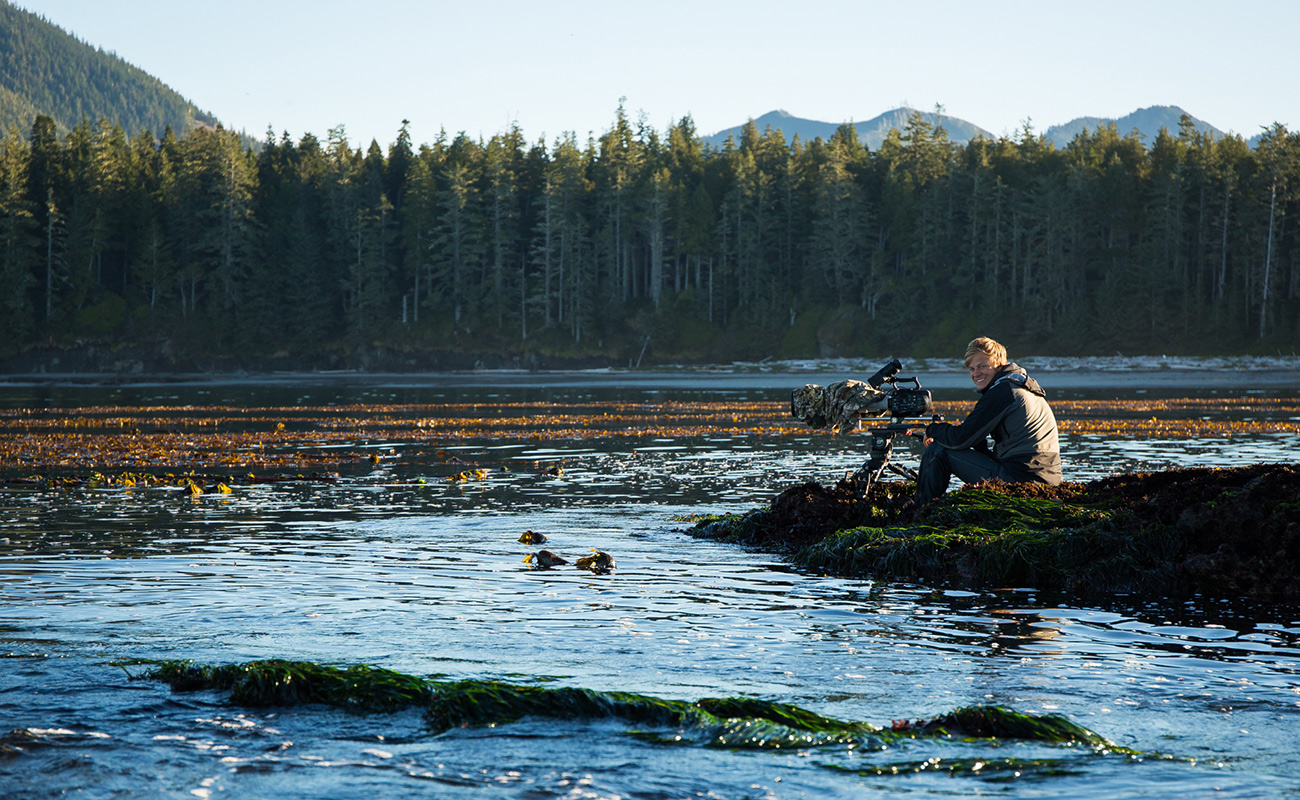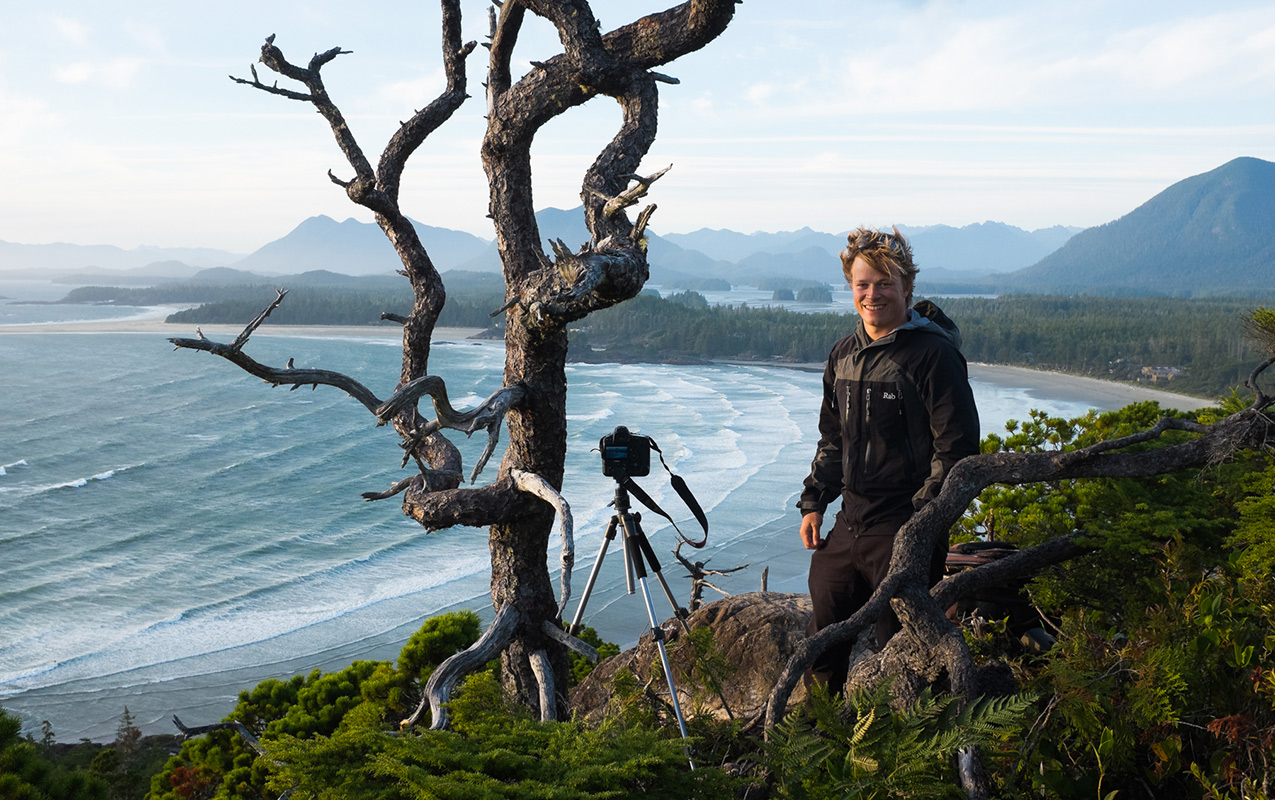
The following piece originally ran in Post Perspectives, detailing the work of one of LaCie’s most adventurous customers – Bertie Gregory, a 22 year old photographer who has traveled the world and won prestigious awards while capturing unique images of wildlife. Using LaCie drives in the field and to back up his data means that he can work with confidence that his images are safe and secure. You can read the full original article here.
Bertie Gregory may be only 22 years old, but he’s already worked at National Geographic magazine, won the 2015 Young Wildlife Photographer of the Year award and is filming Nat Geo WILD’s first online natural history series.
The show, called wild_life, launched on August 3. Each episode finds Gregory (@BertieGPhoto) seeking out wildlife — salmon, black bears, wolves, etc. — to capture with his cameras.
We asked this very busy young Englishman about how he manages his workflow during his 18- to 20-hour days in the field.
Here are Gregory’s Top 5 tips:
1) Have a Backup Plan
Before you set foot in the field, find a data backup system that works for you and stick to it. You’re not always going to be at your best when you’re transferring data from one location to another, and you don’t want to make a mistake. Take time before filming to run through your backup procedures so that there are no surprises.
When downloading from my camera, I always make three copies — one to be stored in a separate geographic location and the other two on me. With file sizes being as large as they are now, having a good workflow in place is absolutely essential. I can aspire to be the best tracker or camera operator, but if we don’t have everything dialed in on the back end, then none of that matters.
2) Choose Reliable Equipment
There are many storage manufacturers competing in the market right now, which has been great for consumers, but be sure that you’re choosing equipment not only based on its price, but also its reliability and durability. There’s plenty of bargain-basement hardware out there that might cost a fraction of their higher-quality counterparts, but they’re likely to let you down exactly at the wrong time.
Between being stuffed in a backpack and overzealous airport baggage handlers, my equipment can really take a beating, so I tend to invest in equipment that might be a bit more expensive initially, but will easily save me significant amounts of time, money and effort over the long-term.
My equipment list:
Cameras:
- Red Dragon
- Canon C300
- Sony FS7
- Multiple GoPros
Computer:
- MacBook Pro
Storage:
- 20TB LaCie 5big Thunderbolt 2
- Multiple 4TB LaCie Rugged RAID drives

3) Choose Speed
I shoot a lot of footage — more than 500 GB on some days — and there’s nothing more soul-crushing than wrapping up 15 hours of filming and realizing that you still have hours of work ahead of you just to back up your data. When I get finished with a day’s shooting, all I want to do is get horizontal as fast as possible. That means I need fast transfer speeds. Look for backup storage devices that use Thunderbolt or USB 3.0 interfaces, and which also incorporate RAID technology to improve both speed and reliability.
4) Get Rid of Distractions
Making one mistake can ruin an entire day’s worth of time, money and effort when you’re backing up your footage. When I’m downloading, I do it in a quiet location without distractions. Just like with everything else in life, you’re going to do a better, quicker job if you have your full attention on the task at hand. Admittedly, this is easier to do in the wilds of Canada than in an office somewhere, but quiet places do exist, even in the modern office.
5) Keep With Your Plan
When you have the right equipment, people and plan in place, you’re ready to go — as long as you keep to that plan. But with the long days, the thankless nature of backing up your data and the strains that being in the field can put on you, it can be very easy at some point down the road to just not keep with the plan.
“Oh, I’ll just do it tomorrow” becomes, “Eh, I can do it this weekend,” which becomes, “Wait, when was the last time I backed up my data?” And while you may get lucky and not suffer a mishap while your data is vulnerable, you’re playing with fire every time you put off backing up your data. Keep to your plan, follow your backup schedule and you won’t ever have to worry.



